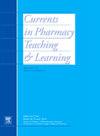Factors affecting pharmacy student career intentions across patient-facing and non-patient facing settings: A cross-sectional evaluation
IF 1.4
Q3 EDUCATION, SCIENTIFIC DISCIPLINES
引用次数: 0
Abstract
Background
Pharmacists are increasingly following diverse career opportunities beyond traditional patient-facing roles. This shift has contributed to workforce pressures in patient-facing settings. Improved workforce models are needed. This study aimed to inform models by understanding student career intentions, placing emphasis on differences in factors affecting career choices between those choosing patient-facing versus non-patient facing roles.
Methods
This cross-sectional study gathered data through an online survey consisting of Likert-scale and multiple-choice questions to explore career intentions and influencing factors. Responses were coded and analysed using descriptive and inferential statistics (chi-squared tests and post-hoc analysis).
Results
Data were collected from 90.1 % of a university's pharmacy students. An interest in science or healthcare, along with a desire to help others, were the main factors influencing decisions to study pharmacy. Over half (56.5 %) of students planned to enter community pharmacy, followed by industry (18.4 %) and hospital pharmacy (10.6 %). Work experience played a crucial role in career decision-making, with 98.7 % considering it important. Those pursuing patient-facing roles placed greater importance on direct patient contact and impact on health and well-being. Students choosing non-patient-facing roles valued benefits, promotion, and training opportunities more highly, while placing less emphasis on use of pharmacy-specific skills.
Conclusion
Study findings provide valuable insights for employers, educators, and policymakers, helping to align workforce planning and pharmacy curricula with student expectations and career motivations. This research supports development of targeted strategies to attract and retain talent in both patient-facing and non-patient-facing roles.
在面向病人和非面向病人的环境中影响药学学生职业意向的因素:一项横断面评估
药剂师越来越多地追求多样化的职业机会,而不是传统的面向患者的角色。这种转变造成了面对病人的工作压力。需要改进劳动力模式。本研究旨在通过了解学生的职业意向来为模型提供信息,重点研究选择面向患者角色与非面向患者角色的职业选择影响因素的差异。方法本研究采用李克特量表和选择题相结合的在线调查方式,收集数据,探讨职业意向及其影响因素。使用描述性和推断性统计(卡方检验和事后分析)对应答进行编码和分析。结果对某高校药学专业90.1%的学生进行了问卷调查。对科学或医疗保健的兴趣,以及帮助他人的愿望,是影响决定学习药学的主要因素。超过一半(56.5%)的学生计划进入社区药房,其次是工业(18.4%)和医院药房(10.6%)。工作经验在职业决策中发挥了至关重要的作用,98.7%的人认为它很重要。那些追求面向患者角色的人更重视与患者的直接接触及其对健康和福祉的影响。选择非患者角色的学生更看重福利、晋升和培训机会,而不太强调使用特定的药学技能。研究结果为雇主、教育工作者和政策制定者提供了有价值的见解,有助于将劳动力规划和药学课程与学生的期望和职业动机结合起来。这项研究支持制定有针对性的策略,以吸引和留住面向患者和非面向患者的人才。
本文章由计算机程序翻译,如有差异,请以英文原文为准。
求助全文
约1分钟内获得全文
求助全文
来源期刊

Currents in Pharmacy Teaching and Learning
EDUCATION, SCIENTIFIC DISCIPLINES-
CiteScore
2.10
自引率
16.70%
发文量
192
 求助内容:
求助内容: 应助结果提醒方式:
应助结果提醒方式:


